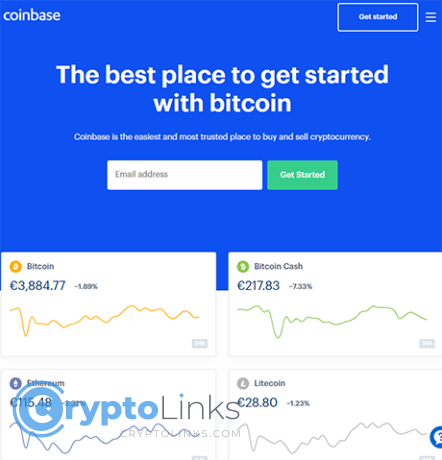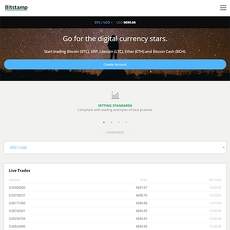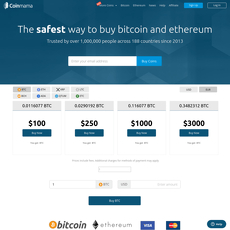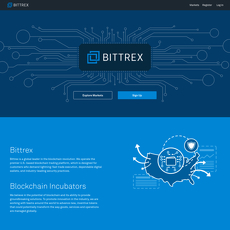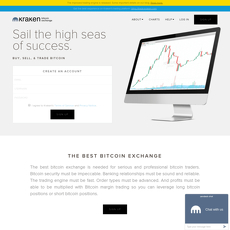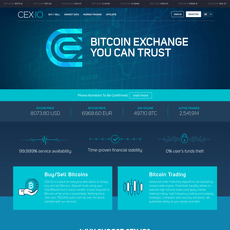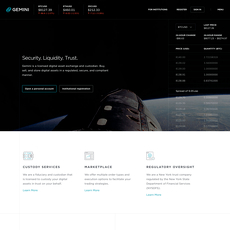Coinbase Review
Coinbase
www.coinbase.com
Coinbase Review Guide: Everything You Need to Know (With FAQs!)
Wondering if Coinbase is the right exchange for you? You're definitely not the only one. With all the hype, horror stories, and hashtags flooding your feed, picking a crypto platform can honestly feel as risky as trading itself. Will your money be safe? Will you actually get your coins? And, oh—could the IRS peek into your wallet? Let’s get some real answers.
Common Problems and Frustrations With Crypto Exchanges
If you've ever typed “how to buy Bitcoin” or “best crypto exchanges” into Google, you already know—this world can be confusing. Everyone’s talking about that one friend who cashed in at the right time, but the behind-the-scenes reality? Not so simple.
- Unclear Costs: Hidden fees seem to pop up everywhere, and sometimes just finding them is a scavenger hunt.
- Security Fears: Stories about hacks and lost funds spread fast—sometimes faster than the coins themselves.
- Clunky Interfaces: If you’ve ever tried to trade and ended up stuck five menus deep, you know how frustrating it can be.
- Is My Data Private? With crypto’s “anonymous” reputation, it’s jarring to learn what information exchanges collect (and who they share it with).
According to a Statista report, global crypto exchange hacks hit their all-time high in 2021, highlighting just how much security matters. Plus, regulatory crackdowns are getting tougher, so it’s smart to wonder: Will using a popular exchange like Coinbase set off any red flags with the authorities?
Here’s How I’ll Help You Get Clarity
Let’s cut through the confusion. I’m here to walk you step by step through Coinbase—no jargon, no cryptic instructions:
- Start-from-zero basics so you don’t get lost
- The “Bitcoin to USD” process (because let’s be honest—that’s what most folks want first!)
- What you’ll actually pay in fees—and ways to avoid surprises
- Security features that work (and some that are just hype)
- Legal realities and IRS questions answered in plain English
- Quick-start tips so you can get in, get set up, and get going safely
What to Expect From This Review
I promise straight talk—no pumped-up marketing fluff. You’ll get:
- Simple explanations and visuals
- Real pros and cons (no sugarcoating)
- Links to top resources, like our ultimate BTC-to-USD exchanges guide and advice from folks who’ve done this before
So, are you ready to see if Coinbase really stacks up, or if there’s a better option for your crypto journey? Hang tight as we unpack why Coinbase is the go-to for millions—and if it should be for you too. Next up: what actually makes Coinbase tick, and why it’s the talk of the crypto town. Do you think hype matches the reality? Let’s find out together…
What is Coinbase and Why Is It So Popular?
If you’ve been poking around the world of crypto for more than five minutes, you’ve almost definitely heard of Coinbase. It’s kind of like the “front door” to the crypto universe—a name you can throw out at any coffee shop in New York, London, or Singapore and get a knowing nod.
“When something is important enough, you do it even if the odds are not in your favor.” — Elon Musk
If crypto feels overwhelming, I hear you. Coinbase has positioned itself as the handrail: the thing that stops you from tripping when you take your very first steps.
A Brief History of Coinbase
Let’s turn the clock back to 2012. That’s when Brian Armstrong and Fred Ehrsam kicked things off in San Francisco, building a place where regular people—not just the tech elite—could grab some Bitcoin without breaking a sweat (or the law).
Coinbase’s mission? Make sending and receiving crypto as simple as sending an email. It sounds obvious now, but back then, crypto was mostly for computer geeks and finance nerds. Fast-forward: Coinbase has grown to serve over 100 million users worldwide, and it’s even been listed on the Nasdaq since 2021. You can buy, sell, and store digital assets all in one place, and the numbers keep climbing. For context, Statista reports that Coinbase’s user base exploded right alongside each new crypto bull run—pretty wild growth.
What Coinbase Offers
Why have so many folks started their crypto story here? Simple. The platform removed the scariness. Whether you’re looking for Bitcoin, Ethereum, Solana, or even the meme coins, Coinbase gives you access to over 240 cryptocurrencies with a few clicks. Here’s a snapshot:
- Buy/Sell/Trade: Instantly convert dollars (fiat) to crypto and vice versa—no waiting for sketchy transfers.
- Wallet Storage: Store your crypto on Coinbase (with insurance safeguards) or move it to your own self-custody wallet.
- Recurring Buys: Set up auto-purchases for popular coins like Bitcoin or Ethereum—kind of like dollar-cost averaging but for crypto.
- Educational Rewards: Watch a video, answer a few questions, and get paid in crypto. Who doesn’t like free coins for learning?
- Advanced Trading: Switch to Coinbase Advanced for fancy charting, order types, and pro-level action—no need to jump platforms.
- NFT Support, Staking & More: Coinbase keeps adding features; from NFTs to staking, it’s hard not to find what you need.
It’s tough not to appreciate the convenience, especially if you’re tired of juggling dozens of sketchy apps.
Why Beginners (and Pros) Like It
Let’s be real: crypto UX can be a total mess. But Coinbase has built its reputation on being wallet-friendly for beginners and powerful enough for veterans. Here’s why even old-school traders keep an account:
- Simplicity First: The interface is clean. You don’t need to be a coder or economist—just a few taps, and you’re in.
- Security Reputation: Coinbase was one of the first big names to take security seriously: two-factor authentication, insurance on stored funds, rigorous compliance checks, and more. In an industry riddled with hacks and scandals, that’s earned them some BIG trust points.
- Instant US Dollar Withdrawals: No more waiting for days (or weeks) to get your money back in your bank account—a feature that’s genuinely a dealbreaker elsewhere.
- Support for Cautious Users: Tutorials, FAQs, and a help desk—the stuff you need if “crypto” is a brand-new concept.
It’s no wonder a lot of people make their actual first ever Bitcoin purchase on Coinbase. The infamous “first trade jitters” are real, but when the process feels smooth (and you don’t lose sleep over a typo), you’re much more likely to stick around for the ride.
But here’s a question for you—how does Coinbase stack up against the rest of the crypto exchange crowd? Is it really unique, or does it just have the loudest brand? Next, I’ll show you what makes crypto-to-fiat exchanges tick, how Coinbase fits in, and where it wins and loses compared to the competition. You’ll want to see this—especially if you’re planning to cash out those hard-earned satoshis for dollars...
How Crypto-to-Fiat Exchanges Work (And Where Coinbase Fits In)
Let’s be honest—stepping into the world of crypto exchanges can feel like walking onto a crowded trading floor for the first time. Crypto-to-fiat exchanges are the bridges, letting you swap your dollars (or euros, yen, pounds, you name it) for digital coins and back again. These are the platforms where your real-world cash meets the magic of Bitcoin and friends.
BTC-to-USD: The Most Common Crypto Trade
Bitcoin to USD (BTC-USD) is truly the bread-and-butter trade for anyone testing crypto waters. When someone’s grandma asks, “So how do I turn these bits and bytes into money for groceries?”—this is the answer. The BTC-USD trading pair is always buzzing with action because:
- Liquidity: Huge volume means you can buy or sell quickly at a fair price—no waiting and no wild price swings (most of the time).
- Familiarity: Bitcoin is the gateway, and USD is still king. This pair is the “starting line” for most people, whether just getting started or riding the ups and downs as a seasoned trader.
- Access: Platforms like Coinbase have made it downright simple to go from your bank account to Bitcoin and, when you're ready, back again. No weird hoops, no jargon avalanche.
I remember my first BTC-to-USD trade—watching those numbers flicker, feeling both anxious and thrilled that, for the first time, my cash was now “crypto.” That sense of empowerment, and maybe a pinch of anxiety, is something almost every crypto user remembers. It’s universal.
Types of Exchanges: Centralized vs. Peer-to-Peer
Now, let’s pull back the curtain on the two main types of exchanges out there:
- Centralized Exchanges (CEX): Think Coinbase, Binance, Kraken. These act as the “middleman.” You create an account, deposit money or crypto, and the platform makes sure your trades go through. If you’ve ever banked online, the experience will feel oddly familiar.
- Pros:
- Easy to use—even if you’ve never touched crypto.
- Customer support if things go sideways (sometimes it helps to talk to a human!).
- Tighter security standards and regulatory oversight.
- Cons:
- You trust them with your money and data—it’s not truly “your keys, your coins.”
- Sometimes longer wait times for withdrawals, especially during wild market swings.
- Pros:
- Peer-to-Peer (P2P) Exchanges: Here, you connect directly with other users—think of it like Craigslist for crypto. LocalBitcoins, Paxful, and Bisq are classic examples.
- Pros:
- More privacy—no central authority holding your info (if that’s crucial for you).
- Potentially better rates if you’re a savvy negotiator.
- Cons:
- More risk—scams do happen, and resolving issues can be tricky.
- Interface can be confusing if you’re new (be prepared to learn the ropes).
- Pros:
It’s not just about “which is better”—it’s about what you value. Security and ease? Centralized might be your friend. Decentralization and privacy? Maybe P2P suits you. Some folks use both, depending on their goals that month.
“Trust is built with consistency.” — Lincoln Chafee
Why Trust Matters
This world runs on trust. Really, it’s everything. When you hand over your money—or your Bitcoin—you’re hoping the platform will play fair, protect your funds, and follow the rules. Headlines remind us what happens when trust is broken (Ever heard of Mt. Gox or FTX’s collapse?).
- Solid platforms like Coinbase invest millions in security, insurance, and following regulations. It’s why they’re the top choice for millions, from students learning about crypto to companies holding billions in coins.
- You can always check transparency reports, recent audits, or security studies—REDX Magazine pointed out in 2023 that exchanges with top trust ratings also had “the lowest number of reported hacks and scams per trading volume.” That’s not just “reputation”—it’s results.
- For me, and honestly for anyone, seeing a company resolve issues transparently and support customers even when things go wrong—that’s often the deciding factor.
So, whether you're looking to cash out for the first time, swap crypto for a new project, or just see what all the fuss is about, the bridge you choose truly matters.
Ever wondered what it’s actually like to sign up and start trading on Coinbase, step by step? Stick with me—next up, I’ll show you exactly what to expect when you open your account (yes, I’ll cover the details, the paperwork, and the real hacks for a smooth start)! Ready?
Opening a Coinbase Account—Step-by-Step
Setting up your first Coinbase account feels like a big leap. That “here we go” moment is bittersweet—part hope, part “I hope I don’t mess this up!” If you think opening an account will be stressful or confusing, stick with me. I’ve done it, and I’ll show you just how simple (and safe) it actually is.
The Signup Process
Let’s get real—opening a Coinbase account can take as little as five minutes, unless you lose your WiFi or forget your email password (happened to me, not fun). Here’s what you’ll need on hand:
- Email address (use a secure and private one, not your old MySpace account)
- Strong password
- Phone number for verification
You simply visit Coinbase.com, click “Get Started”, and punch in your info. Some studies show that account completion rates jump when platforms keep the steps quick and clear—Coinbase nails this with a beginner-friendly, uncluttered signup flow.
Once you confirm your email, a code will hit your phone—enter it, and you’re officially in. There’s a real sense of progress when that first Coinbase dashboard loads.
KYC and AML: What to Expect
"Trust is built with consistency." – Lincoln Chafee
That trust comes into play the moment you reach Know Your Customer (KYC) and Anti-Money Laundering (AML) requirements. It’s not about snooping—regulators require this so platforms can keep scammers and bad actors out. Here’s what gets asked for:
- Full legal name & date of birth
- Government-issued ID (like a driver’s license or passport)
- Address verification (sometimes, a selfie with your ID is required—be ready with good lighting!)
Expect to upload photos directly or snap them with your phone. Most users get approved in under 15 minutes, but sometimes, manual checks can take a couple of hours. It’s quick compared to the bureaucratic marathon of opening a traditional investment account.
If you’re eyeing higher trading limits or want to unlock all features, you’ll need full verification. But for simple buying and selling, basic KYC is usually all you need at first. Heads-up: If anything feels off, Coinbase is known for flagging it—security first, always.
Setting Up Security
If there’s a single step you should never skim over, it’s security. I’ve read far too many sad stories in forums and on Reddit about people losing access because they skipped a safeguard (don’t be that person!). Here’s how to lock things down:
- Two-factor authentication (2FA): Turn it on instantly. Use an app like Authy or Google Authenticator, not just SMS—it’s much safer.
- Unique, long password: Consider a passphrase or use a password manager so you never forget it. No “123456” or “password”—please, for your own future self!
- Withdrawal whitelist: Only allow withdrawals to wallets you trust. It adds a layer of hassle, but it’s a strong shield.
- Profile monitoring: If Coinbase notices a login from a new device or IP address, they’ll alert you. Take those alerts seriously.
Fun fact: According to a recent Statista report, platforms that push users to set up 2FA see up to 80% fewer successful account breaches. That’s your peace of mind, right there.
Getting your account registered isn’t just about unlocking crypto trading—it’s about stepping through all the right hoops to keep your funds, and your identity, safe.
Once you’re through, the really exciting part starts—actually buying, selling, and trading. But how tricky is it to make your first crypto purchase, and what does the Coinbase dashboard actually look like when you log in? Stick around, because next up, I’ll show you the ins and outs of using your new account for your very first trade (with some inside tricks for smoother, smarter moves).
Trading, Buying, and Selling on Coinbase
Let’s get real—pressing that “Buy” or “Sell” button with your hard-earned cash (or crypto!) comes with a rush, especially on a platform as popular as Coinbase. Still, the difference between a smooth experience and a headache can come down to how comfortable you feel using the platform...and how much you end up paying. Here’s what it’s like to actually use Coinbase for your everyday trading and investing.
Navigating the Interface
The first thing you’ll notice after logging in is the incredibly straightforward dashboard. Whether you’re checking your Bitcoin balance or curious about the latest crypto under “Trending,” everything is right where you’d expect:
- Portfolio Snapshot: Instantly see your current holdings. No guesswork, no hunting through menus.
- Quick Actions: The primary buttons—Buy, Sell, Send, Receive—are front and center. For anyone who’s tried navigating old-school exchanges, there’s a real sigh of relief here.
- Market Listings: Easily scroll through supported assets (over 240 at last count), and view price movements or market summaries in a blink.
- First Trade Made Simple: Pick your coin, enter the amount, choose payment, hit confirm. That’s it. No joke, I’ve seen total beginners make their first Bitcoin buy in under three minutes—no YouTube tutorial needed.
"The best technology disappears in your hands. You’re left with what you wanted to do, not how you had to do it."
That’s exactly how using Coinbase feels when it works at its best.
Deposits and Withdrawals
Now, moving money on and off Coinbase is another area where their popularity really shows. You’ve got a good mix of payment methods, with the exact options varying a bit by country:
- Bank Transfer (ACH, SEPA, etc): Usually free or low cost. Expect one to three business days, a little faster in some areas.
- Debit Card: Instant buys, but be careful—the fees can sting (I’ll get to that in a sec!).
- Wire Transfer: For larger amounts or more traditional users. Can be slow and occasionally expensive.
- Crypto Deposits: Instantly credited after network confirmations, but always triple-check your addresses. Sending crypto to the wrong spot is a nightmare, and no exchange can save you there.
Withdrawals tend to mirror your deposit method. Sometimes your bank might even beat Coinbase—transfers can hit within hours, but I always warn friends it might take a day. Here’s one small frustration: some regions face lower daily or weekly limits until your account “ages” or you clear extra checks. Not ideal if you’re in a hurry.
Fees—What You Pay (and What to Watch For)
Let’s talk money. Coinbase is often criticized for being more expensive than competitors, and that’s not just internet rumors. Studies (see Coindesk’s breakdown) show fees can average from 0.5% to 4% depending on what you’re doing and how you’re paying.
- Standard Trades (Web/App): Expect around 1.49% to 3.99% per transaction, depending on the payment method (debit cards cost more than bank transfers).
- Coinbase Advanced: If you’re trading higher volumes, fees drop, starting around 0.6% and getting cheaper the more you trade each month.
- Hidden Costs: Watch for “spread fees”—the small difference between buy and sell prices, usually about 0.5% but it can shift in fast markets. That number isn’t always obvious on your receipt!
The trick for regular users? Avoid buying with cards if you can help it, and batch larger trades to keep percentage fees lower. Every bit counts, especially if prices move fast.
Here’s the bottom line: while you’re never more than a couple of clicks away from your next trade, it pays to keep a close eye on those fees and limits—they add up, even when you’re just testing the waters.
Ever wondered how safe your crypto really is once it’s on an exchange? Spoiler: all the convenience in the world means nothing if your funds aren’t secure. Next, let’s explore what Coinbase actually does behind the scenes to protect your money—and what you should watch out for yourself…
How Safe Is Coinbase? Security Measures Explained
Let’s be honest—when it comes to crypto, “Is my money actually safe?” is the question that keeps us up at night. I get it. The news is full of stories about hacks, SIM swaps, and lost Bitcoin. So, how does Coinbase stack up when it comes to protecting your funds and your personal data? Let’s walk through the real security layers (and a few cautionary tales).
Core Security Features
First things first, Coinbase takes security way more seriously than most people realize. Here’s what they bring to the table:
- Two-Factor Authentication (2FA): Want to log in? You’ll need not just your password, but also a one-time code. Text messages used to be the standard, but for best results, move to an authenticator app (like Google Authenticator or Authy). This prevents most common hacks—even if someone knows your password.
- Cold Storage: Over 95% of customer funds are kept in cold wallets—meaning they’re stored completely offline and out of reach from internet thieves. Only a tiny portion (mainly for quick withdrawals) is ever online at a given time.
- Encrypted Wallets: Every wallet is encrypted with AES-256. That’s the kind of encryption banks—and some governments—trust.
- Insurance: Did you know that Coinbase carries insurance to protect user funds against a platform-wide hack? It’s not infinite and doesn’t cover hacks of your own device, but it’s rare peace of mind in the crypto world.
- Custodial Accounts for Institutions: If you’re trading big money, their custodial service brings even deeper compliance and physical vault protections. (According to reports, even multi-signature access is split across continents!)
“Security isn’t just a feature; it’s a mindset. You don’t notice it—until something goes wrong.”
What Happens if There’s a Breach?
No system is invincible. But how a platform responds to trouble is where it proves its worth. Coinbase has faced phishing attempts, social engineering attacks, and isolated account takeovers. The good part? They’re usually fast to detect suspicious activity and can freeze accounts for investigation.
One real-world example—back in 2021, some accounts were compromised after attackers gained access to users' email inboxes. Coinbase reimbursed the users impacted, which is almost unheard of among crypto exchanges. So, if the worst happens, you could get some help (but don’t count on miracles if you ignored basic security yourself!)
Your Role in Staying Safe
I can’t stress this enough: No level of technical wizardry will protect you if your own habits are weak. Here’s what you need to be doing, every single time:
- Always enable 2FA—ideally with an authenticator app. Don’t rely on SMS alone; SIM swaps are a real threat.
- Choose a unique, random password. No “Fluffy123!” or old favorite; use a password manager like 1Password or Bitwarden.
- Check your device and email security. If your email gets hacked, attackers can reset your exchange password. Turn on 2FA for your email, too!
- Be suspicious by default. Coinbase will never ask for your password or 2FA code via email. Watch out for phishing links—even convincing ones.
- Don’t skip withdrawal confirmations. If you get a withdrawal alert you didn't request, act fast—contact support immediately and lock down your account.
Here’s a quick gut check: would you leave your cash in an unlocked car? Your crypto wallet deserves the same street smarts. Even the best exchanges can only do so much if you hand over the keys by accident.
I know, it can feel like a lot. But this peace of mind is worth every second. There's always more quirks and risks—especially once we talk about the legal side, government reporting, and exactly what Coinbase shares with the IRS. Ever wondered just how visible your trades really are? Stick around, the next section is going to clear up a ton of legal mysteries and tax surprises you don’t want to miss…
Legal Stuff, Taxes, and What the IRS Can See
Let’s be real for a second: crypto’s cool factor takes a quick nosedive the moment you start searching “Do I have to pay taxes on Bitcoin?” or “Will the IRS knock on my door if I cash out on Coinbase?” I get these questions all the time. If there’s one thing that freaks people out most—especially if you’re new to crypto—it’s not just losing money on a trade, but getting tripped up by the legal and tax rules. Let’s make all of this crystal clear.
Is Coinbase Legal in My Country or State?
It’s easy to assume that if you can sign up, you’re good to go. But crypto laws, especially in the US, can make your head spin. Here’s what you really need to know:
- Coinbase is fully regulated in the US. That means it plays by strict rules, from registration with FinCEN (as a Money Services Business) to heavy-duty compliance in most states. If you’re in New York, for instance, Coinbase holds a BitLicense to legally serve you.
- Global reach—but not everywhere. Coinbase works in 100+ countries, but some locations are left out because of local laws or sanctions. For example, you can’t use Coinbase in places like North Korea, and features differ if you’re in Japan or Singapore.
- Always check if your state or country is supported via Coinbase’s official list—things can change fast.
So, yes, the odds are high it’s legal for you. But don’t just gamble on that—skim their legal info. One user wrote me in a panic after noticing their functionality dropped overnight due to a local law change (Canada’s shifting rules come to mind). It pays to stay alert!
What Data Is Reported to the IRS?
This is the question everyone whispers about—but let’s not dance around it: yes, Coinbase does tell the IRS about your transactions if you’re a US user. Not all exchanges do (or do it as well), but Coinbase is one of the most “by the book” mainstream sites around. Here’s how it works:
- Coinbase sends the IRS 1099 forms—especially if your gains top $600 or you meet certain other requirements.
- They report your name, address, taxpayer ID, and a summary of your annual transactions. Withdrawals, sales, conversions—it’s all there.
- Pro tip: Even if you don’t get a 1099, your data may still get flagged if you transfer big stacks of money in or out. Banks love to file suspicious activity reports.
It’s not meant to scare you—just keep things in check. Think about it: as Nobel Prize winner Paul Samuelson once said,
“The avoidance of taxes is the only intellectual pursuit that still carries any reward.”
But play too clever, and trust me, you’ll find out exactly how efficient the IRS’s new blockchain analytics teams have become. A recent study showed the IRS collected $1.2 billion in crypto-related back taxes since 2020—yep, you read that right.
Reporting Your Crypto Taxes
Okay, so Coinbase reports info. But what should you actually do when tax season hits?
- Log every crypto trade—really. Not just when you sell to dollars, but also when you swap one coin for another.
- Use tools like Blockpit or Bankrate’s tax guides to keep track and avoid headaches later.
- File your crypto gains and losses along with your regular taxes (on Form 8949 in the US, for example).
And if you think nobody’s watching those small trades or believe you’re too “under the radar” to get caught—just look at the thousands of warning letters Coinbase users received from the IRS a few years ago. Some folks ignored it, then got hit with audits and even penalties later.
Getting ahead of the stress means reporting is always better than scrambling after the fact.
Still think Coinbase might not be your best fit for privacy—or that you could get better options elsewhere? There are factors besides tax rules that can turn even a great crypto exchange into a headache! But before you lock in your decision, the next part has an angle most folks wish they checked before picking an exchange. Ever wondered what actually makes a BTC-USD exchange stand out from the pack, and why do some users swear by alternatives? Hang tight—you might be surprised.
What Makes a Good BTC-to-USD Exchange? A Broader View
Let’s be honest—Bitcoin is the star. It gets all the headlines, it’s everyone’s first crypto crush, and it’s the measuring stick for the whole industry. Whether you’re swapping $10 or looking to cash out your profits from an altcoin run, you want a place that’s trustworthy, fast, and (ideally) won’t drain your wallet with crazy fees. But what separates the great BTC-to-USD exchanges from the just-ok ones?
Factors to Consider Before Choosing Any Exchange
Here’s a real-world, no-nonsense checklist I use and recommend you keep handy every single time you’re thinking about moving your hard-earned Bitcoin into dollars—even if you’re just swapping 0.01 BTC.
- Business Model: Is it centralized (think broker or trading platform) or peer-to-peer (P2P)? Each style comes with unique perks and potential snags.
- Regulation & Legality: Does it play nice with the law in your country—or is it operating in the shadows? Legal compliance can shape your experience more than you’d expect.
- KYC/AML Requirements: Want fast signups or ultimate privacy? Centralized exchanges usually demand your info (for KYC & AML), P2P sometimes gives you that anonymous feeling.
- Security & Custody: Look for multi-factor authentication. If they hold your funds, do they have multisig wallets? Are assets stored in multiple places to prevent single-point failure?
- Customer Support: Can you get a real answer when something goes wrong? Live chat, support tickets, and language options matter more than you’d think.
- Payment Methods: Do they support your favorite way to pay or withdraw (bank, PayPal, cards, or even cash)? More choices can mean better deals and faster transactions.
- Fees: Some exchanges charge flat fees, some sneak in hidden costs—always check! P2P sites can have great deals if you like to negotiate.
- Trading Volume & Liquidity: High volume usually means your order gets filled quickly, at the price you see. Low liquidity can lead to annoying slippage.
- Mobile & User Experience: Is it easy to use? Responsive design and mobile apps make it way less stressful, especially on busy days.
I know it seems like a long list, but missing any one of these can seriously mess up your first (or next) Bitcoin-to-USD experience. For a comparative breakdown, check out this deep resource: BTC-to-USD exchanges resource—I update it constantly to help you spot both hidden gems and red flags.
How I Curate Top Crypto Exchanges on Cryptolinks
When it comes to reviews, I don’t just skim the homepage and call it a day. My process starts with a forensic look at the legal status of every exchange. Can you actually use it in your region, or will you end up getting blocked halfway through registration?
From there, I put security to the test—what protection do they really offer against hacks or mistakes? I’ll also reach out to support with real user scenarios, just to see how fast (and how professionally) they respond.
Then there’s the nitty-gritty: how many ways can you pay in or withdraw out, what are the fee structures, how lively is the trading scene (volume and liquidity), and—crucially—how does the actual user interface feel on your phone or desktop?
My final step? I actually use these exchanges to swap BTC for USD (including oddball amounts like 0.01 BTC) and document every frustration, surprise fee, or hidden trick. Only after all that do platforms make it into my official shortlist.
Top Resource: Where to Exchange 0.01 BTC to USD
I know a lot of you are asking, “Can I really cash out a super small amount of Bitcoin, like 0.01 BTC, without getting eaten alive on fees or rejected outright?” Great question—and yes, not every exchange supports tiny trades or offers you a fair rate. That’s why I built and keep updating this master list: BTC-to-USD exchange options. It’s the best way to compare rates, fees, and supported payment methods in one shot.
Some exchanges set strict minimums, others offer truly competitive prices for small amounts, and a few even let you stay (mostly) anonymous if you prefer. The marketplace changes fast, so it pays—literally and figuratively—to scout a few options before clicking "sell" on your favorite platform.
So, if you’re looking to swap out Bitcoin for dollars—whether you’re cashing out a birthday gift or liquidating your trading stash—it’s worth learning how all these pieces fit together. Wondering how Coinbase itself stacks up and what unique benefits it brings to the table? Or maybe you’re itching to see the trade-offs and lesser-known tips before you make your next move? That’s exactly what’s next—let’s answer the burning questions and clear up the pros and cons.
Your Coinbase FAQ and Final Take: Is It Right for You?
Your Questions Answered
Alright, time for the big questions—these pop up in my inbox all the time, and chances are you’ve wondered about them too.
- Can the IRS see my Coinbase wallet?
Yep, Coinbase does report certain user data to the IRS, especially if you’re in the US and hit those reportable thresholds (think 1099 forms). If you buy, sell, or make trades over specific amounts, Uncle Sam will find out—so make sure you keep your records clean and file your crypto taxes. On a personal note, I've seen several readers breathe easier once they used a tax tool like Blockpit at year-end. Losing sleep over taxes is no fun—just stay on top of it. - What makes Coinbase good for beginners?
The interface is super easy to navigate. I’ve watched friends enter crypto for the first time and place their first Bitcoin buy within minutes—without needing a dictionary or a hand-holding session. There’s a built-in education hub with short lessons and even some crypto rewards for learning. For comparison, a place like Kraken offers more pro features upfront, but it can overwhelm new users. Coinbase is all about that “just-get-me-started” experience. - Is my money safe on Coinbase?
No exchange is risk-free, ever, but Coinbase has a strong security record—2FA login, insurance on custodial funds, a routine of keeping most coins in cold storage, and quick response to support tickets. After the big 2021 market swings, they beefed up even more, as media reports highlighted. Of course, always use your own added protections too. - What if I get locked out or need support?
Here’s where experiences vary. Some users have had quick, painless password resets; others shared with me that waiting on support for account verifications can take a day or two during busy times. It’s frustration for sure, but it’s not unique to Coinbase—high-security platforms often take their time to help.
Pros, Cons, and Alternatives
Let’s call it like it is: every exchange has its highlights and headaches. Here’s how Coinbase stacks up.
- What makes Coinbase stand out?
- Simplest interface for buying, selling, and holding over 240 coins.
- Strong reputation and regulatory compliance—especially for US and EU users.
- Solid mobile app (top-rated on both Android and iOS).
- Where does Coinbase fall short?
- Some of the highest trading fees among top platforms (especially on small trades).
- Limited coin selection compared to giants like Binance.
- Account verification/support can be slow during peak times.
- Centralized model—so transactions and personal info are tracked. Fully anonymous it is not.
- When to consider alternatives?
- If you want lower fees and are willing to learn a more advanced interface—look into Kraken or Binance.
- Prefer private peer-to-peer swaps? Check out LocalBitcoins.
- Looking for the best rates? Always compare with my hand-curated BTC-to-USD exchange list first.
Wrapping Up and Your Next Steps
If you’re getting started in crypto or want a “plug-and-play” way to buy your first coins, Coinbase is still one of the easiest and most trusted options out there. Just remember: always lock your account down with strong security, back up your info, and don’t take anyone’s word as gospel—including mine!
There’s no shame in hopping between exchanges as your goals change. In fact, it often pays to look around for better fees, new coins, or added privacy. That’s why I keep everything super updated over at Cryptolinks.
Ready to take the leap? Browse my best resources, keep learning, and don’t hesitate to ask questions. The more you know, the less likely you’ll get caught off-guard by hidden fees, tax surprises, or security slip-ups.
Crypto is about personal freedom—and that includes making smart, informed decisions with your money. Explore smart, research extra, and remember: you’re never too late to start.

